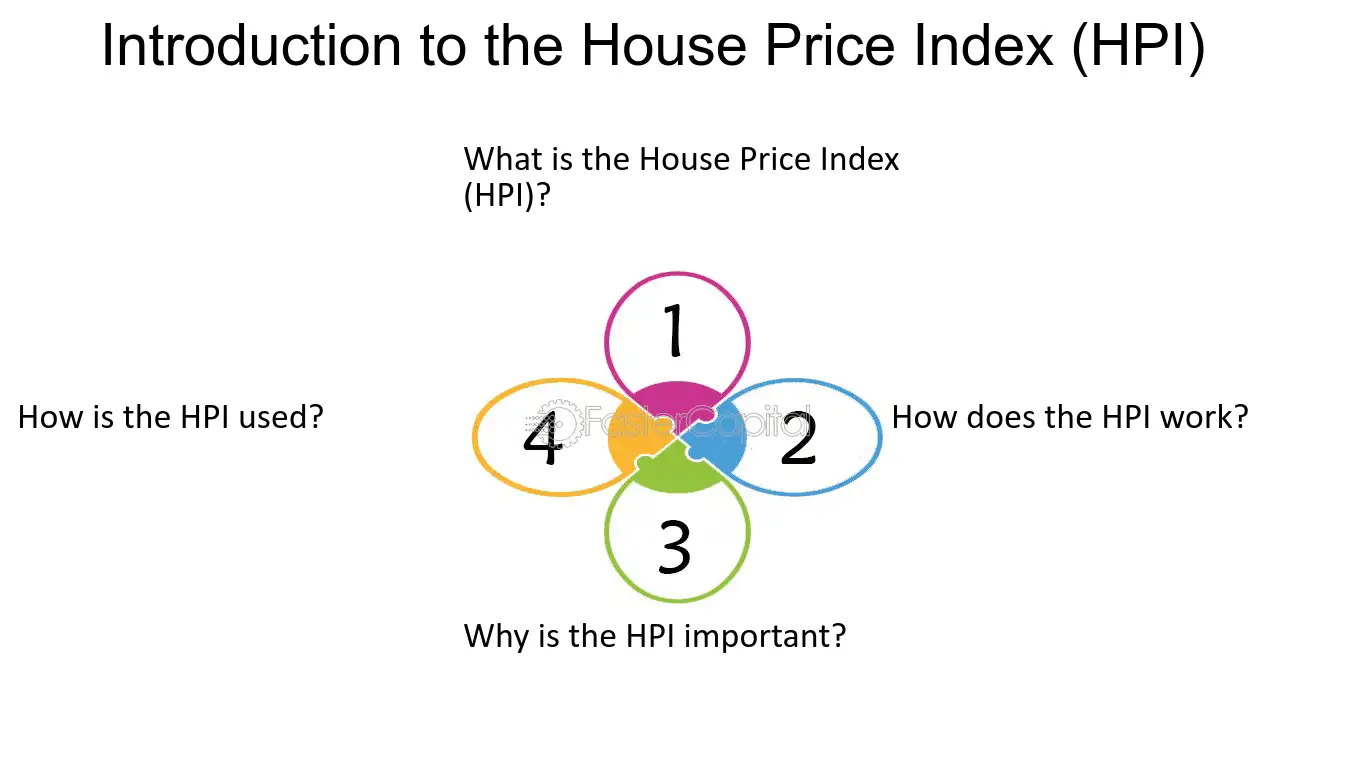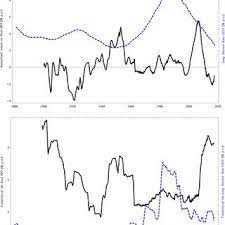What is the House Price Index?
The House Price Index (HPI) is a statistical measure that tracks the changes in the prices of residential properties over time. It provides valuable insights into the trends and fluctuations in the housing market, allowing policymakers, economists, and investors to make informed decisions.
By tracking the changes in house prices, the HPI enables policymakers to monitor the affordability of housing and identify potential risks, such as housing bubbles or price crashes. It also helps in formulating effective housing policies and regulations to ensure stability and sustainability in the market.
How is the House Price Index Calculated?
The HPI is calculated using a weighted average of the prices of residential properties. It takes into account various factors such as location, type of property, size, and condition. The index is usually based on a baseline period, which is assigned a value of 100. The subsequent changes in house prices are then measured relative to this baseline.
Data for the HPI is collected from various sources, including real estate transactions, property listings, and surveys. The collected data is then analyzed and processed using statistical methods to calculate the index.
Applications of the House Price Index
The HPI has several applications in different fields:
- Real Estate Investment: The HPI helps investors in identifying potential opportunities and risks in the housing market. It provides valuable insights into the profitability and potential returns of real estate investments.
- Market Analysis: The HPI is used by economists and analysts to analyze the trends and patterns in the housing market. It helps in forecasting future price movements and identifying market trends.
How is the House Price Index Calculated?
The House Price Index (HPI) is a statistical measure that tracks changes in the prices of residential properties over time. It provides valuable insights into the overall trends and movements in the housing market. Calculating the HPI involves several steps and considerations.
Data Collection
The first step in calculating the HPI is to collect data on residential property sales. This data is typically obtained from various sources, such as real estate agencies, government records, and property listing websites. It is important to ensure that the data is comprehensive and representative of the housing market in question.
Property Matching
Once the data is collected, the next step is to match the properties that have been sold over time. This involves identifying unique property identifiers, such as addresses or parcel numbers, and linking them to the corresponding sales transactions. Property matching is crucial to ensure accurate and consistent price comparisons.
Price Adjustment

After the properties are matched, the next step is to adjust the prices for any changes in the quality or condition of the properties. This is done using various statistical techniques, such as hedonic regression models, which estimate the value of different property attributes, such as location, size, and amenities. The goal is to isolate the pure price changes from other factors that may influence property prices.
Weighting
Once the prices are adjusted, the next step is to assign weights to the properties based on their relative importance in the housing market. This is typically done using data on the number of properties sold in each area or segment of the market. The weights ensure that the HPI reflects the overall market trends accurately.
Index Calculation
The calculated HPI can then be used to analyze and compare the performance of different housing markets, track inflation in property prices, and inform policy decisions related to the housing sector.
Applications of the House Price Index
The House Price Index (HPI) is a valuable tool for various applications in the real estate industry and economic policy-making. It provides important insights into the trends and changes in housing prices, allowing for informed decision-making and analysis. Here are some key applications of the House Price Index:
1. Real Estate Market Analysis
The HPI is widely used by real estate professionals, investors, and analysts to analyze and understand the state of the housing market. It provides a comprehensive overview of price movements, allowing stakeholders to identify patterns, trends, and potential investment opportunities. By examining the HPI, analysts can determine whether housing prices are rising, falling, or stabilizing in a particular area or region.
Real estate market analysis using the HPI helps stakeholders make informed decisions about buying, selling, or investing in properties. It enables them to assess the potential risks and returns associated with different locations and property types. For example, if the HPI shows a consistent increase in prices in a specific neighborhood, it may indicate a high-demand area suitable for investment.
2. Policy-Making and Economic Planning
The HPI plays a crucial role in economic policy-making and planning. Governments and policymakers use the index to monitor and evaluate the performance of the housing market. By tracking changes in housing prices, policymakers can identify potential risks, such as housing bubbles or affordability issues, and take appropriate measures to address them.
The HPI also provides insights into the overall economic health of a country or region. Rising housing prices can indicate economic growth and prosperity, while declining prices may signal a slowdown or recession. Policymakers can use this information to formulate policies related to interest rates, taxation, and housing regulations.
3. Mortgage Lending and Risk Assessment
Banks and financial institutions rely on the HPI to assess the value of properties when granting mortgages. The index helps lenders determine the loan-to-value ratio, which is the ratio of the loan amount to the appraised value of the property. By considering the HPI, lenders can accurately assess the risk associated with a particular loan and make informed lending decisions.
The HPI also plays a crucial role in risk assessment for mortgage-backed securities and other financial instruments. Investors and rating agencies use the index to evaluate the creditworthiness and potential risks associated with these investments.
Using the House Price Index for Real Estate Investment
Real estate investment is a popular choice for individuals looking to grow their wealth and secure their financial future. One of the key tools used by investors in the real estate market is the House Price Index (HPI). The HPI provides valuable insights into the trends and changes in housing prices, allowing investors to make informed decisions.
By analyzing the HPI, investors can identify areas with high potential for growth and profitability. The index provides information on the average price changes in different regions, allowing investors to compare and evaluate the performance of various markets. This data can be used to identify emerging markets or areas where prices are expected to increase in the future.
Additionally, the HPI can help investors assess the risk associated with a particular investment. By analyzing the price trends and fluctuations, investors can determine the stability and volatility of a market. This information is crucial for making sound investment decisions and managing risk effectively.
Furthermore, the HPI can be used to determine the fair value of a property. By comparing the current price of a property with the historical price trends reflected in the HPI, investors can assess whether a property is overvalued or undervalued. This information can guide investors in negotiating prices and making informed investment decisions.
Moreover, the HPI can be used to track the performance of an investment portfolio. By monitoring the changes in housing prices, investors can evaluate the profitability of their real estate investments over time. This information can help investors make adjustments to their portfolio and optimize their returns.
The Role of the House Price Index in Economic Policy
The House Price Index (HPI) plays a crucial role in informing economic policy decisions. It provides policymakers with valuable insights into the state of the housing market, allowing them to make informed decisions that can have a significant impact on the overall economy.
Monitoring Housing Market Stability
One of the primary uses of the HPI in economic policy is to monitor the stability of the housing market. By tracking changes in house prices over time, policymakers can identify potential risks and vulnerabilities in the market. This information is essential for implementing measures to prevent housing market bubbles or crashes, which can have severe consequences for the economy as a whole.
The HPI also helps policymakers assess the impact of various economic policies on the housing market. For example, if the government implements a new tax policy that affects real estate transactions, the HPI can be used to measure its impact on house prices and overall market stability.
Inflation Monitoring and Monetary Policy

The HPI is also a valuable tool for monitoring inflation and guiding monetary policy decisions. Changes in house prices can have a significant impact on inflation rates, as housing costs are a significant component of the consumer price index. By tracking the HPI, policymakers can assess the contribution of housing to overall inflation and adjust monetary policy accordingly.
For example, if the HPI shows a rapid increase in house prices, policymakers may consider tightening monetary policy to prevent excessive inflation. On the other hand, if the HPI indicates a decline in house prices, policymakers may implement measures to stimulate the housing market and prevent deflationary pressures.
Assessing the Impact on Household Wealth
The HPI is also crucial for assessing the impact of changes in house prices on household wealth. Changes in house prices can have a significant effect on household net worth, as housing is often the most substantial asset for many individuals. By monitoring the HPI, policymakers can gauge the potential impact of changes in house prices on consumer spending and overall economic activity.
If the HPI shows a significant increase in house prices, policymakers may expect a boost in consumer spending as households feel wealthier and more confident. Conversely, if the HPI indicates a decline in house prices, policymakers may anticipate a decrease in consumer spending, which could have negative implications for economic growth.
Conclusion
The House Price Index is a vital tool for policymakers in shaping economic policy. By monitoring the stability of the housing market, assessing the impact on inflation, and gauging the effect on household wealth, policymakers can make informed decisions that promote economic stability and growth. The HPI provides valuable insights into the state of the housing market, allowing policymakers to implement measures that mitigate risks and support a healthy economy.

Emily Bibb simplifies finance through bestselling books and articles, bridging complex concepts for everyday understanding. Engaging audiences via social media, she shares insights for financial success. Active in seminars and philanthropy, Bibb aims to create a more financially informed society, driven by her passion for empowering others.
